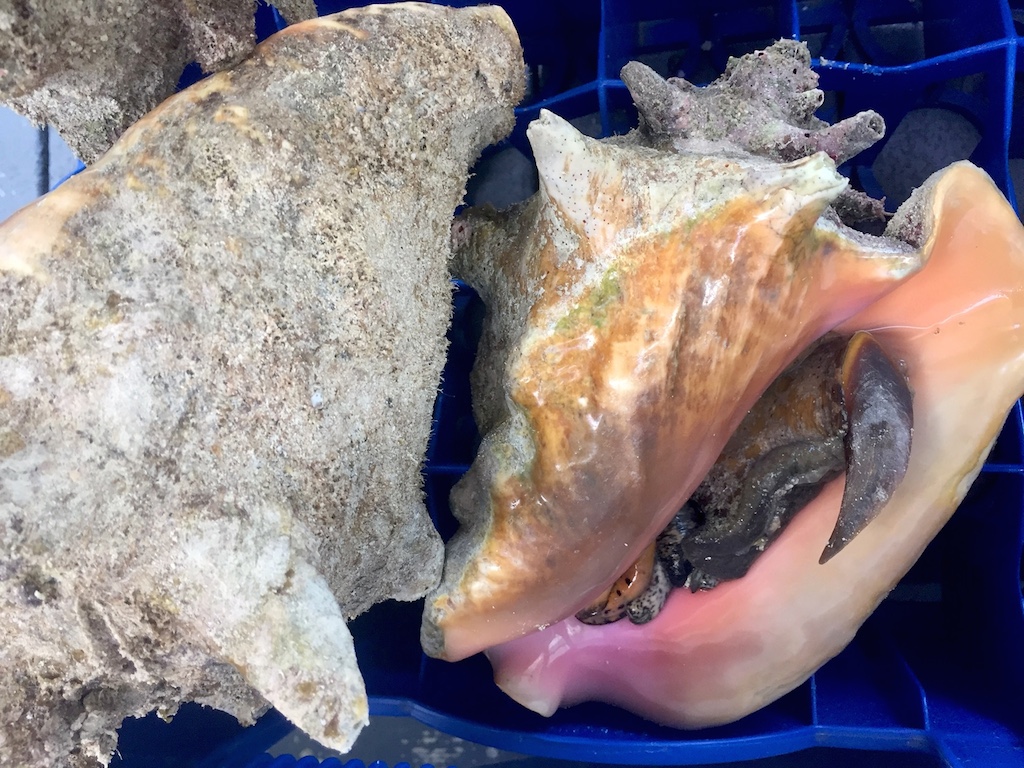
Have you ever made your own jerk marinade? How many ways can you eat conch? What does breadfruit look like on the inside? Do you know what black sapote is? Have you tasted roasted tomato aioli? Do you want to learn the tips and tricks to smoking fish? Welcome to this month’s Cooking Class!
**
The fresh conch in their shells wait at the kitchen door as the final ingredients for our March cooking class are harvested from The Brasserie garden.
Locally caught swordfish marinated in housemade jerk flavors matched with caboose roasted Cayman breadfruit and coconut turmeric conch sauce is on the menu, giving guests an insight into local tradition and cuisine passed down through the generations, when recipes and techniques were kept secret and competition and pride ran high among jerk cooks.
Ask a local what the work jerk means and they’ll tell you that it refers to the motion in either turning the meat in the marinade or over burning coals. The term jerk is said to come from the word charqui, a Spanish term for jerked or dried meat, which eventually became the word jerky in English. Jerk is also derived from the action of jerking or poking the meat with holes so that the flavor can be more easily absorbed.
Jerk has been served on Caribbean tables for hundreds of years, traditionally Jamaican Jerk was a method of cooking pork. A unique blend of seasonings including scallions, onions, scotch bonnet peppers (that gives jerk its spiciness), salt, thyme, allspice (Jamaican pimento) and black pepper, all ingredients are grown on the islands’ fertile soils. Chef Thomas shares his nifty trick of grilling the scallions and onions until charred for extra flavor.
There are gasps of surprise as our Pastry Chef, Christine, hands around the pureed black sapote, a species of persimmon, ready to whisk into the other mouthwatering panna cotta ingredients. Also know as “chocolate pudding fruit” (sounds delicious right?) the fruit flesh is rich, dark chocolate in color with a custard-like consistency and even tastes like mild chocolate without the calories. A boost for your immune system, black sapote is rich in antioxidants and vitamin C.
Laughs, surprises and lots of taste testing involved!
Want to be part of our final Cooking Class for the series being held on Sunday 30 April? Email us to book your spot: reservations@brasseriecayman.com






